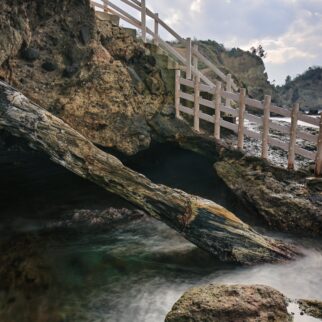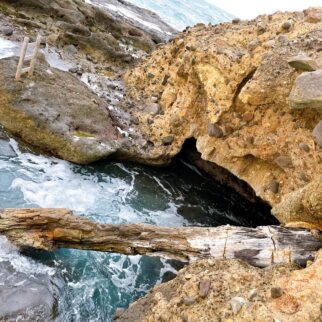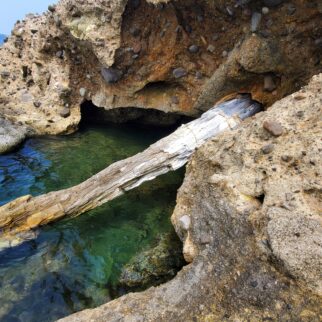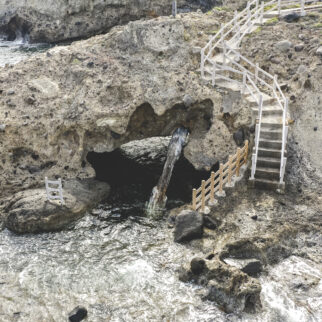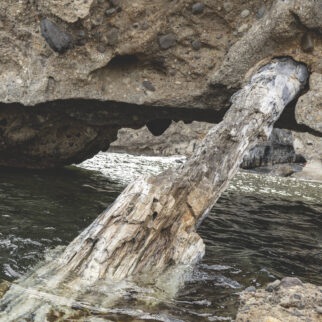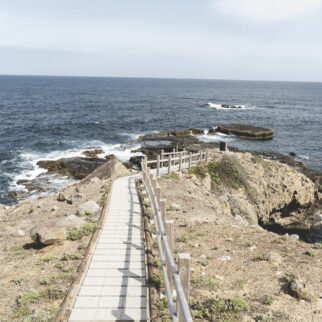 The blessings of volcanoes
The blessings of volcanoes
that have nurtured life
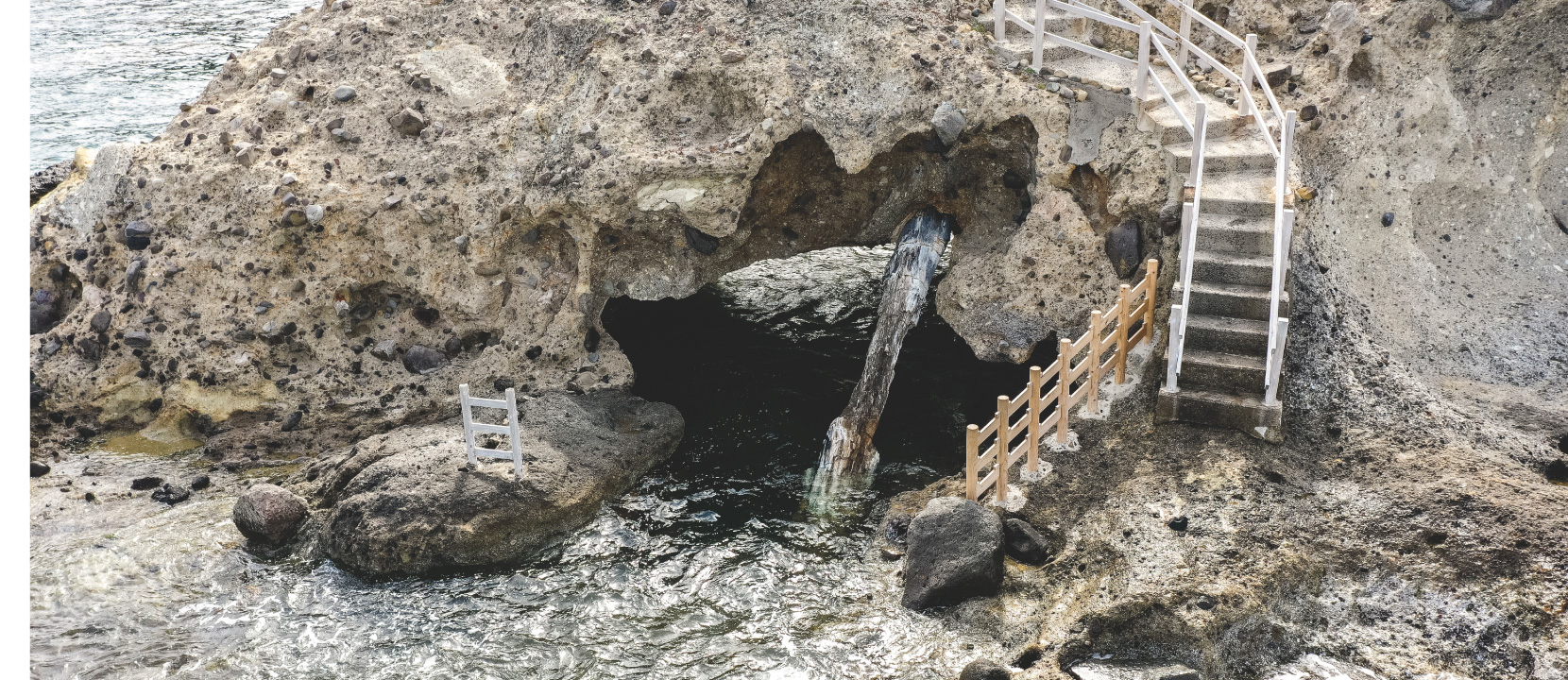
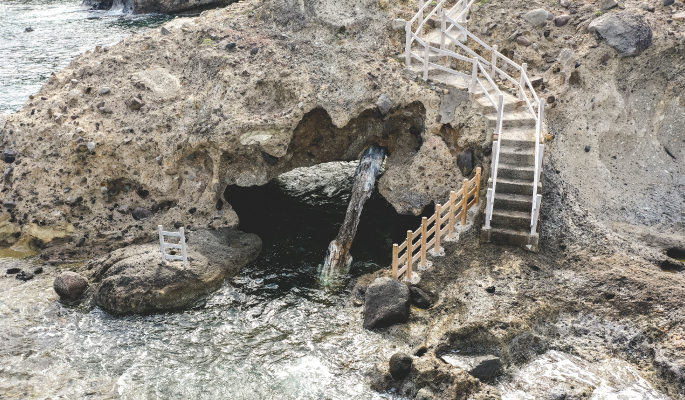
Fossilized trees
The Silicified Wood of Hanenishi
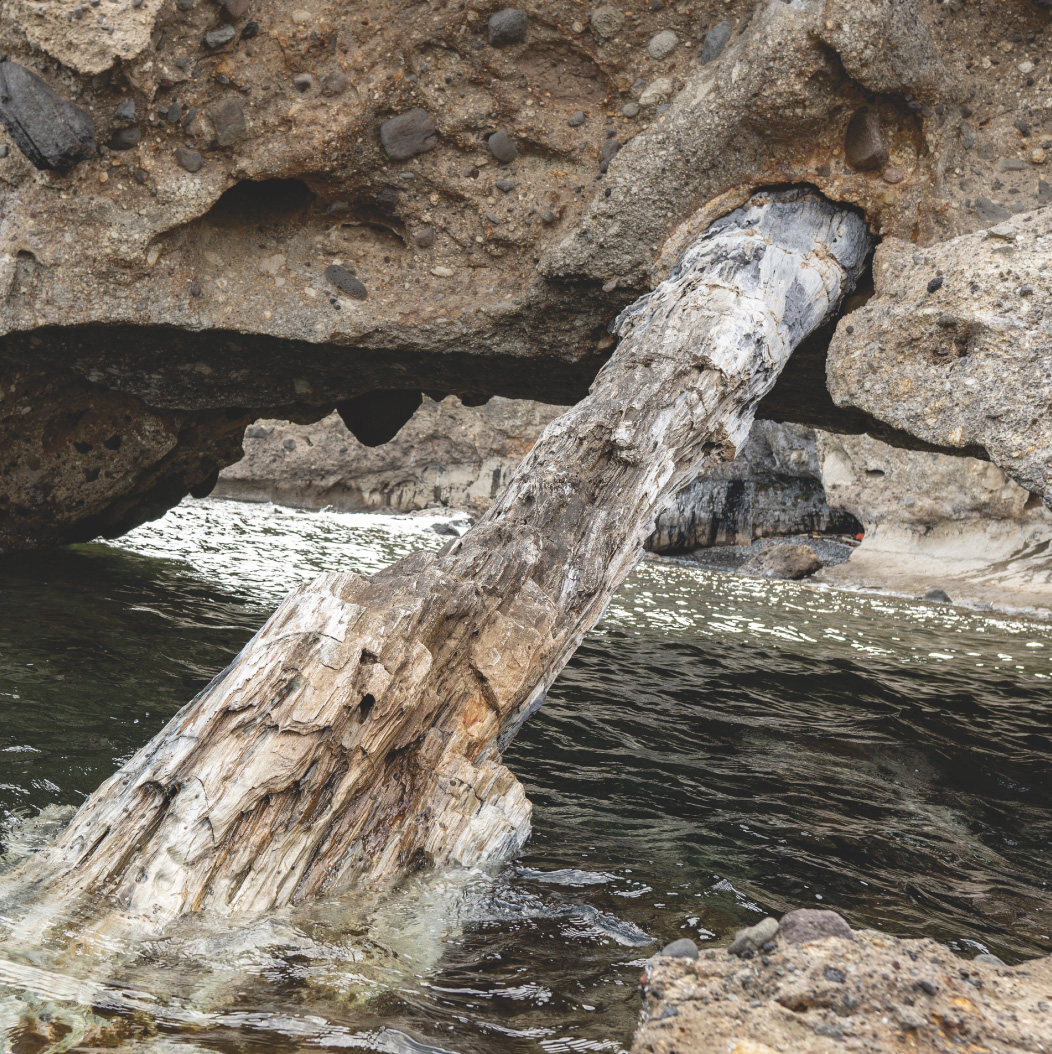
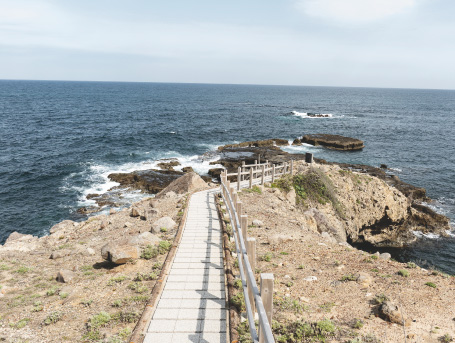
The Silicified Wood of Hanenishi, a national natural monument, is a large fossil tree that stands out for its peculiar appearance. It juts out diagonally from the coastal cliff face and one end continues to the bedrock on the seabed. This fossil, presumed to be a tree of the fagaceous family, was buried by a volcanic eruption just a little less than 15 million years ago. The silicified tree was swept away by the wave of debris that accompanied the eruption and was buried near the coast at the time. It is known that there are many silicified trees lying on the seabed around the Silicified Wood of Hanenishi, and you can imagine how the wave of debris would have knocked down and carried away the trees of the forest. It is said that when the nearby Kute fishing port was built in the early Showa era, many silicified trees were pulled up from the seabed. One such fossil, a particularly large specimen, is placed in the schoolyard of Kute Elementary School.

- 1The coastal area in the past
- The period when the silicified (petrified) trees were buried corresponds to the latter half of the period of crustal movement that formed the Japanese archipelago. Although the Japanese archipelago was then roughly in its present position, its shape was quite unlike what we see now. It could be said that the land was completely different from the current topography.







